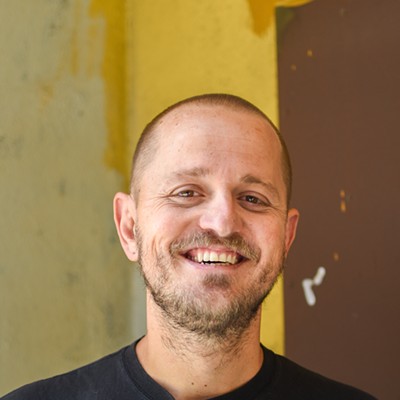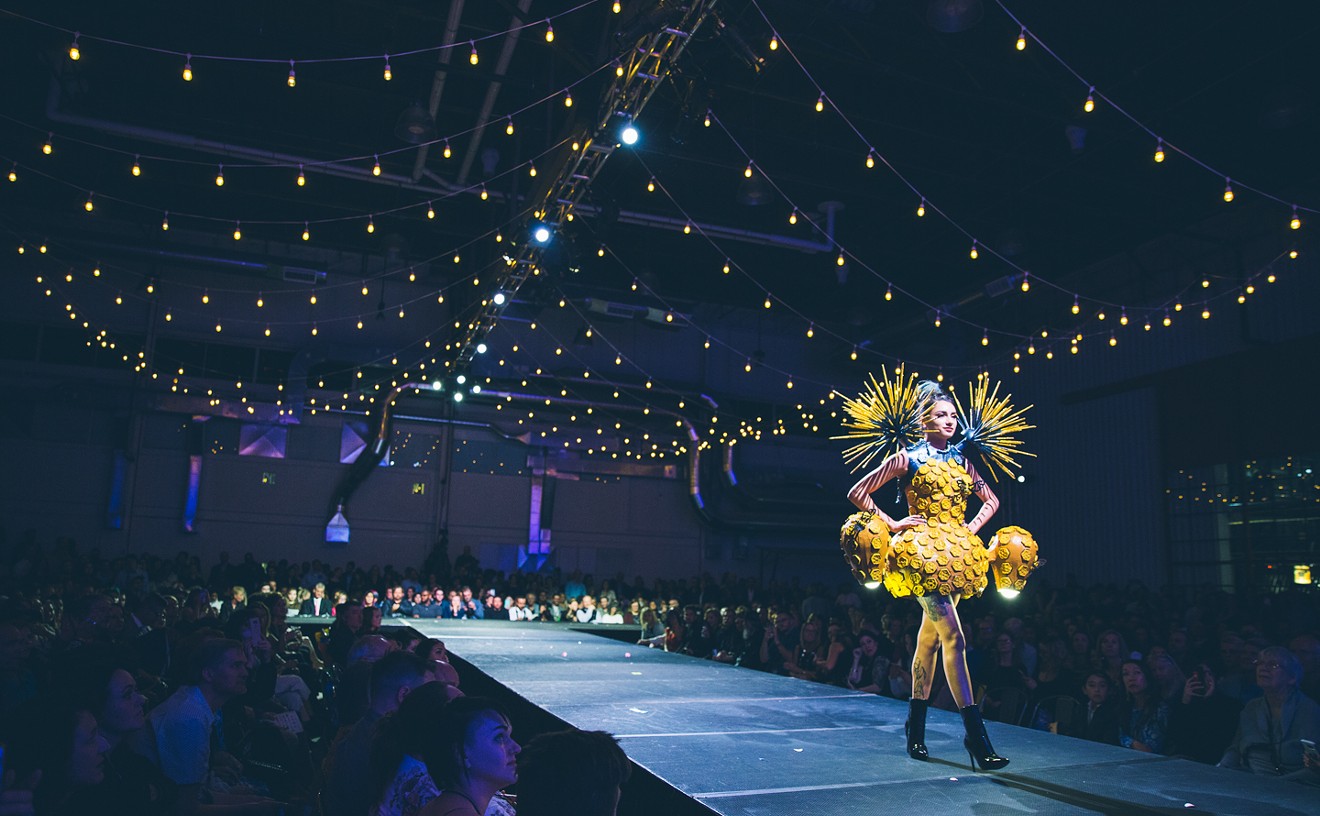In advance of tonight's screening of Yasinski's films at First Person Cinema, Westword spoke with the filmmaker about her work.
See also: Jodie Mack on Her Rock-Opera Documentary and Experimental Animation
Westword: When you're sitting down to work on a piece, how do you think about structure?
Karen Yasinsky: I start with one image that I either animate or represent in some way. When the work is doing that, I start thinking about it and start thinking about what to build around that image, in terms of sound and other images. Usually, there is a long period of creation, like the rotoscoping animation or thinking about an idea before I shoot an image or find an image. Then, the editing, I'll start with one piece that I'm sure of and then start to bring in the other pieces, sound and other images, and then start to see how they work together. Sometimes, the thing I start with gets cut out and it starts to take a shape that I couldn't have predicted when I started.
How long does that take?
Well, Life is an Opinion Fire a Fact, the rotoscoping of the self-immolation took close to a year. I was working on drawings and some other work, but that was the only animation I did that year. The piece I'm working on, the animation is going to take at least a year. In that time, I'll get other ideas, thinking I'm going to put them in that movie, but they might end up being a different movie.
Often, it's things that I'm interested in, in a particular point of time, then put together more like in dream logic. Diverse images might pop up in a dream and you're not sure why they're related, except for the fact that they were in your brain, maybe touching each other before you fell asleep. So it's sort of like that. I don't try and find a real literal connection. I usually don't work from a scene. I think it's related to surrealism, but a different kind of surrealism that allows you unjudgmental access to different structures, as opposed to surrealism based on the id, I guess. But maybe it's a form of id.
There is this question of the dreamer when you're talking about the id and traditional surrealism, in some ways. Do you see a dreamer in these scenarios?
No. It's more the structure. There's an essay by Lyn Hejinian called "Strangeness" and she talks about the strangeness of accessing and interpreting a dream, where if you do it honestly, you give equal attention to every detail because you're not yet sure what has meaning and what has importance and how to prioritize it and turn it into a narrative.
Everything that I choose to put together has importance and because they're going to be together, they're going to relate. It can sound like laziness and just forcing things together just because I like them, but I truly believe that's how we think a lot. It's the most natural way for me to make work.
I started with puppet animation. Some of the more narrative works will be shown on Monday night, but I got frustrated with having to come up with a narrative structure where there was always something that was going to happen in relation to what happened right before. I think I still have that in these non-narrative structures, but it may be more formal and the reason why it happens may not be clear until the end of a movie. And it may not even be clear, but if the viewer can stay with the images and stay with them through the transitions, then hopefully they end up in a different place in the movie.
Read on for more from Karen Yasinsky.
Talk about your relationship to time and pacing and the amount of time you're giving to any given subject or set of images.The time within the sequences in the movie as a whole or my time?
Actually, both.
(Laughs.) Okay. Well, my time, I feel really good about the way that I work, because I don't often have long periods of full days to work, so I've sort of developed a way where I can work in a few hours here and there, and with the animation, I don't do it constantly. I can wake up and do an hour and then do something else and it's not something that I have to be into. I can just pick it up however I feel or whatever is going on around me, whereas the editing is much more intense, and I have to stay with it. I tend to edit at night, because there aren't any interruptions and I have other things I like to do with my day.
Within the movie, each scene has its own rhythm inside of the shot and then how do you stay true to that but also use varying rhythms to create tension. I got really into working with sound, because these ideas are best represented with sound, in terms of how rhythms work together. So, it's interesting for me to have not only found the rhythms in the image and sound match and sort of challenge each other at times, but it changes.
I like to give a lot of time to each image, even if there's a little chopping inside of it, you're staying with this one thing. I think about boredom and repetition and the kind of boredom that stops being boredom because it empties you of expectations of how you should read the image and then allows you just to look and listen. What do you expect from viewers and how have you seen them respond?
I don't expect anything. What I hope for is total attention. What really began to inform me was a film, The Hart of London, by the Canadian artist Jack Chambers. It's a long film. It's close to an hour. It's broken up into three parts. There are other films that do this. The sequences are so long that you get anxious, and then the anxiety leaves, and then you stop trying to read it, and you start to experience it. I know not everybody wants to do that.
In terms of viewers, I believe there are people out there who are interested in that kind of movie experience that is different. I don't have any expectations, but I do believe I know it's finished when it's working for me and it gives me some sort of emotion and experience that I feel is where I want the viewer to be.
I guess, there must be some other people out there like me who will have an experience. I don't expect it to be the same one, but usually the emotion that I'm dealing with, or at least one emotion in there is pretty clear and strong. Talk about some of the range of emotions you are addressing and dealing with and your strategy around that. Early on it was this tenderness and a need for connection, nonverbal, and I guess, I probably didn't realize that I was most interested in emotion, but I'm most interested in things that we're capable of experiencing that have nothing to do with language. I'm interested in violence, not how it feels to be hurt but how we process violence within the world. I'm very interested in desire and the emotions that are unresolved, that bring up challenges.
Karen Yasinsky will present a selection of her short films at 7 p.m. tonight at First Person Cinema at the CU Visual Arts Complex, 1085 18th Street in Boulder. Tickets cost $4; for more information, go to the First Person Cinema website.
Find me on Twitter: @kyle_a_harris











